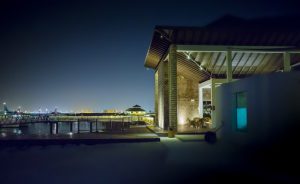When deciding whether to travel or undertake any home renovation such as a home extension you need to consider the following. Why are you wanting to improve, expand or change your home in some way? or do you need a change which can potentially be achieved with a short break or holiday? If you wish to go down the house extension path then here are some things to consider.
Many properties have an untapped potential, and renovations are able to make a house more enjoyable to reside in as well as adding to its market value.
Be aware of the area
Before you start that extravagant expansion or costly conversion, then it is vital to speak with a local real estate agent to learn what sort of renovations are popular locally. Every road has a ceiling value and thus don’t over-do-it if you would like to gain a fantastic return on your investment.
RESEARCH FIRST
While most modern extensions are a world away from these awkward structures which try unsuccessfully to combine the present building with the extension, they have moved on in the ultra-modern glass boxes and blended materials of the previous couple of decades. People are still keen to modify the structure of a building and do something a little more dramatic like incorporate curved timber, but purity is a huge trend, and having plenty of different materials is much less fashionable than it has previously been. Opting for something much more elegant such as pure white-rendered extensions work nicely on period homes, or select a layout clad completely in wood.
Judith Tugman of Architect Your House agrees that people need easy, light, airy spaces; a blank canvas that they could decorate and personalise with timber products perhaps. They are utilizing natural materials to make modern extensions which are both functional and warm.
With more people working from home, this has come to be an even more common reason to expand. They have a lot of customers who need a work space that can be hidden away simply by the fold of a lever for example.

This shift has seen many people are turning rooms in the front part of the home into an office and redesigning the rear of the home as the primary living area. Because of this, getting your audio-visual gear, plasma display, lighting and Wi-Fi incorporated into the structure is a clever thought.
Unsurprisingly, there has been a large move towards sourcing more environmentally sound materials, and government regulations imply that any new construction has to stick to energy-saving guidelines. Materials like bamboo, that is economical, durable and eco-friendly, are extremely popular, and people are also asking for low-VOC paints. ‘One in four lighting in new constructions should be reduced energy, and suitable insulation can also be crucial. In the long term, obviously, each one these components will cut down your energy bills too.
Your budget
Having a budget makes it easier when working with an architect and builder as they can see what they can achieve with the amount you are willing to spend. Some builders may even be able to perform a job for a little bit less where you can then put that money to higher end fittings, etc.
- A typical guideline is to allow $250 per sq feet of renovation, and remember you are not only considering the expansion but the present space indoors, also.
- If you elect for less expensive fixtures and fittings, then you can squeeze this down to $200, but if you go for high quality that may rise to $300 a sq ft.
- Bear in mind, in addition to the construction budget, there’ll be an architect, engineer and contractors’ fees, authorities VAT and building control and preparation expenses, too.
- Do not forget to allow a contingency fund of 10 percent for unforeseen conditions.
Ground-level extensions
Up until very recently, the front part of the home has been the most social area of the house and the kitchen and back were only functional spaces. Today, with cooking a more popular hobby, open-plan kitchen-diners are increasingly in demand. Buyers enjoy distances that suit their way of life and ambitions, and side extensions and big living/dining areas appeal to the way people live today. A sizable, well-lit family room which has access to this backyard is a large selling point.
The largest ground-level extensions are integrated indoors, but also blur the boundaries between indoors and outdoors. The flow of this construction, finishes and materials like the flooring may work together with the outside area to make them feel the exact same thing.
Full-height doorways can help connect the inside to the backyard, and also in winter once the doors have been shut it can nevertheless give the impression it is one big space.
Given that your property has not been extended previously, it is possible to expand by up to 50 cubic metres, so long as it is over 4m above ground level, or 10 percent of the present floor area, without getting planning permission. Nevertheless, check before undergoing a job if there are different conditions which apply.
Occasionally simply removing inner walls may open up a room without needing to eat into precious space from the backyard. And remember that using a side return may increase the size of your kitchen by around 40 percent.
Undergoing a renovation can provide you with the fresh change you need and provide you with a holiday oasis within your own home. A home away from home so to speak.